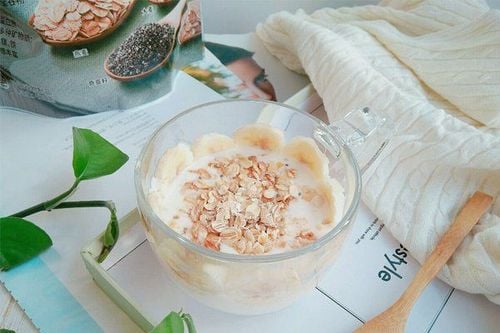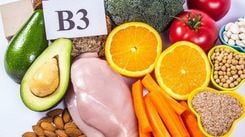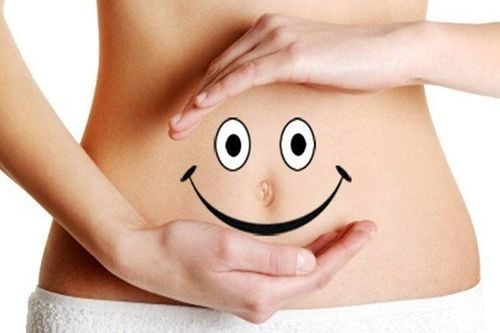Oats are a nutritious option for children, but their consumption should be moderated to avoid overindulgence. According to nutrition experts, children should consume oatmeal no more than 3–4 times a week. The quantity should vary depending on their age, ensuring it does not exceed 100 grams per serving.
1. Oats in Children's Meals
Oats are an excellent food choice for babies starting solids. This cereal grain is rich in essential nutrients like fiber, protein, and vitamins. Oats are highly beneficial for infants, but it’s important to understand the appropriate age to introduce this food.
2. When Can Children Eat Oatmeal?
You can introduce oats to your baby at six months of age. However, it’s possible to offer this food as early as four months after consulting a pediatrician. The doctor will assess signs of readiness and decide if the baby is ready to start weaning.
3. Health Benefits of Oats in Children's Meals
Children can gain the following health benefits by incorporating oats into their diet:
- Oats provide nutrition for children with gluten allergies: Children allergic to gluten cannot consume grains like wheat, rye, and barley, which provide essential nutrients. However, they can eat oats, which are gluten-free and contain the same vitamins and minerals as other essential grains. Oatmeal enhances the nutritional value of a gluten-free diet, which can otherwise lead to nutrient deficiencies in infants.
- Supports constipation: Being rich in fiber, oats can help alleviate constipation. Healthcare professionals recommend incorporating oats into the diet of individuals with constipation, and this advice is effective even for infants.
- Boosts immunity: Oats contain a type of sugar called beta-glucans, which are known to enhance the production of immune system cells. Regularly eating oats can help maintain a healthy immune system, which is particularly beneficial for a developing fetus.

- May help reduce inflammation: Oats contain compounds called avenanthramides, which can help reduce inflammation caused by various factors, including infections and wounds. Infants with certain autoimmune conditions may benefit from the anti-inflammatory properties of oats.
- Improve insulin sensitivity: Infants with congenital type 1 diabetes may benefit from consuming oats as the grain can help reduce insulin resistance. This means the body uses injected insulin more effectively, lessening the impact of diabetes.
- Important food for children with GERD: One treatment option for infants with gastroesophageal reflux disease (GERD) is feeding them thicker pureed foods. Oatmeal is considered a safe and healthy thickening agent for such babies.
3. The Best Oatmeal for Babies
Steel-cut oats are ideal for infants as they are minimally processed and retain all the nutrients of whole oats. You can use steel-cut oats in various baby food recipes, depending on your convenience.
4. How to Choose and Store Oatmeal for Babies
Choosing Oats: When selecting steel-cut or regular oatmeal for babies, look for varieties without added preservatives, sugar, salt, or flavorings.
Storage: Store oats in a dry, cool place. Like other grains, oats can be susceptible to pest infestation. Ensure the storage area is clean and use pest control measures if necessary.
It's best to purchase oats in smaller quantities that can be consumed in a short time. For long-term storage, place oats in airtight containers or Ziplock bags and keep them in the freezer.
5. How to Prepare Oatmeal
Cooking Oatmeal for Babies
Soak the oats in water for one minute. Cook the soaked oats for 10–15 minutes or as directed on the package. Add more water or milk to adjust the consistency. Allow the cooked oats to cool, then puree them to prepare oatmeal porridge for the baby.
Cooking Steel-Cut Oats for Babies
Rolled and steel-cut oats are whole grains and therefore require more cooking time. Boil the rolled or steel-cut oats for 10 minutes and soak them in boiled water overnight (11–12 hours). The next day, bring the oats back to a boil, cooking them for 15–20 minutes over medium heat. Stir continuously to ensure even cooking. Once cooked, let the oats cool and puree them to make porridge.
You can replace water with milk and follow the same preparation process.
In addition to cooking with milk, oats can be combined with other foods to create delicious oatmeal recipes for your baby.
Oats Taste Best When Paired With the Following Foods:
- Regular milk, the top choice to pair with oats. You can cook oatmeal and combine it with milk.
- Most fruits taste great with oats. Fruits like bananas, with their natural sweetness, pair particularly well with oats.
- Boiled vegetables can be finely chopped and cooked with oats to make savory porridge for your baby.
- Meat can be combined with oats similarly to vegetables. You can prepare delicious oatmeal porridge with just oats, meat, and water.
- Oats can also be paired with yogurt to make a smoothie for your baby. It’s a perfect blend for a probiotic-rich pre-meal snack.
Oats pair well with almost all types of food, making them an excellent addition to your baby’s diet. However, allergies are always a concern when introducing new foods to your baby.

6. Can Children Be Allergic to Oats?
Children can be allergic to oats, but it is rare. The American Academy of Pediatrics states that oats are less likely to cause allergies compared to other grains. Therefore, introducing oats into a child’s diet is generally considered safe.
However, if a child is allergic to oats, symptoms may include vomiting, nausea, hives, abdominal pain, lethargy, and facial swelling.
Signs of Food Allergy: In rare cases, children may experience Food Protein-Induced Enterocolitis
Syndrome (FPIES), a condition characterized by symptoms such as severe vomiting, abdominal pain, and diarrhea. If you suspect your child shows signs of a food allergy, consult a doctor immediately.
7. Frequently Asked Questions About Oats for Children
7.1. Is oatmeal better than rice cereal for children?
Oatmeal contains more fiber than rice cereal, making it better for digestion. Pediatricians consider oatmeal a promising alternative to rice cereal for reducing constipation in children.
7.2. Should you choose organic oats for children?
You may prefer organic oats over regular oats. Although oats are not on the list of foods most contaminated by pesticides, they may still contain trace amounts of pesticides.
7.3. How much oatmeal should a child eat at one time?
You can add a few spoonfuls of oatmeal to your child’s daily solid food intake. The amount of oatmeal used can depend on your preference. Three to four tablespoons of oats per day can provide adequate fiber and nutrition for a growing child. However, nutrition experts recommend giving children oatmeal no more than 3–4 times a week, with the portion size depending on their age, ensuring it does not exceed 100 grams per serving.
7.4. Does oatmeal cause gas in children?
Currently, there is no scientific evidence suggesting that oatmeal causes gas in children.
Oats are nutrient-dense and have a lower risk of causing allergies, even for children trying solid foods for the first time. The higher fiber and sugar content in oats compared to other cereals make oatmeal more nutritious. Incorporate oats into your child’s diet to support their growth and development.
Visit Vinmec.com regularly for more useful information to care for your child and your family!
To arrange an appointment, please call … or make your reservation directly HERE. You may also download the MyVinmec app to schedule appointments faster and manage your reservations more conveniently.













